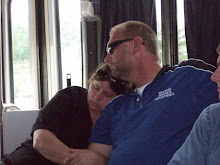Homemade Household Cleaners and Tips
I hope these little tips and ideas will be helpful!
White Vinegar - Eliminate soap residue by adding 1 cup of white vinegar to the washer's final rinse. Vinegar is too mild to harm fabrics but strong enough to dissolve alkalies in soaps and detergents. Vinegar also breaks down uric acid, so adding 1 cup vinegar to the rinse water is especially good for babies' clothes. To get wool and cotton blankets soft and fluffy as new, add 2 cups white vinegar to a full tub of rinsewater. DO NOT USE VINEGAR IF YOU ADD CHLORINE BLEACH TO YOUR RINSEWATER. IT WILL PRODUCE HARMFUL VAPORS.
Baking Soda - 1/4 to 1/2 cup baking soda per wash load makes clothes feel soft and smell fresh.
You can cut the amount of chlorine bleach used in your wash by half when you add1/2 cup baking soda to top loading machines or 1/4 cup to front loaders.
Vinegar - To remove smoky odor from clothes, fill your bathtub with hot water. Add 1 cup white vinegar. Hang garments above the steaming bath water.
Cornstarch - For homemade laundry starch, dissolve 1 tablespoon cornstarch in 1 pint cold water. Place in a spray bottle. Shake before using. Clearly label the contents of the spray bottle.
Bleeding of Colors: Your red shirt got mixed in with other clothes and ruined them? First off, DON'T DRY THEM! Wash again with regular detergent and color-safe bleach. If that didn't work, Rit, the makers of clothes dye, makes a color remover that works wonders and doesn't cost much. To prevent bleeding in the first place, wash in cold water; I also use a cup of salt OR a scoop of Oxi Clean with every load.
Blood on Clothes: Pour hydrogen peroxide on blood and rinse with cold water. If some blood remains, repeat.
Burn / Scorch Marks: If the fabric is washable, brush it gently with a soft brush or dry sponge to remove loose carbon particles. Then, wash the fabric with regular detergent and color-safe bleach. This will permanently weaken the fabric even more than the scorch has, but the scorch may no longer be noticeable.
Burnt Stuff on Iron: Rub iron with aluminum foil to remove burnt on starch, etc.
Deodorant Stains on the Underarms of Washable Shirts: Sponge on white vinegar (or soak stain in it); wait 30 minutes. Launder shirts in the hottest water safe for the fabric. Using an enzyme detergent or a detergent with bleach alternative check care labels to be sure this is okay). I sometimes put liquid laundry detergent right on the area, leave it for five to ten minutes, then wash. To prevent: Let deodorant dry before dressing. And don't let stains sit! Apply prewash spray or liquid detergent ASAP, then launder. Every third or fourth washing, use the hottest water safe for the shirts.
Down Comforters / Jackets: These can, indeed, be washed rather than dry cleaned. Any stains, such as the grime on the cuffs of a jacket, should be spot-cleaned with a pre-treater, then rinsed with water. Wash the item in the gentle cycle with mild detergent. The key is to ensure the down is rinsed extremely well. Then, place in the dryer rather than line drying. This allows the feathers to plump up again. Place large knotted towels or tennis balls in the dryer with it to help fluff the down. The only caution is, if the item has weak seams or fragile fabric it could "explode" and leave you with only down. If there are stains remaining, place it (on a blanket) outdoors in full sunshine for a day or two. This often helps. If not, at least your comforter will have that outdoor fresh smell.
Dryer Tip: Include a few tennis balls in each dryer cycle. The tennis balls not only cut drying time by 25% - 50%, but also fluff the clothes to a delicate softness, and towels with be especially fluffy.
Fabric Softener: I have been using an old dish towel as a fabric softener sheet. I pour a couple of capfuls of Downey on it and throw it in the dryer. It has taken over a year to go thru a bottle of (small) Downey fabric softener. I add more Downey about every 15 loads or just when I notice a little static. It helps to use a towel that is distinct from the other laundry.
Fading: Turn dark clothes inside out and wash in the coolest water possible; dry on lowest heat. For all-black clothes and linens, throw in a box of black Rit dye every 8-10 washes or so to keep black clothes black.
Foggy Mirrors and Glass: Spray a generous amount of good ol' fashioned shaving cream (not gel) onto the mirror or window and rub in with a clean cloth. Use a new clean cloth until all streaks are gone. This will prevent fogging as long as you don't wipe or clean the glass.
Gasoline On Clothing: Gasoline is an oil based product, therefore, use another oil based product to pull out the odor (which is left because all the gas oil has not been removed yet). You can use any kind of oil that normally washes out of clothing, like baby oil. Put some of the oil into the washer along with the clothes, let it swish around for a while, then put in the detergent and all should come out okay. Be sure not to use a dryer to dry these clothes, as it could cause a fire.
Grease Stains: Sprinkle a generous amount of cornstarch or baby powder over the grease stain, allow it to sit for a couple of minutes, then brush the powder off. The powder absorbs the grease and it brushes off with the powder.
Gum In Hair or On Clothing: Use egg whites to remove gum on clothing. Brush egg white onto gum with a toothbrush. Let sit for 15 minutes and then launder on the items normally. I personally haven't used this tip. When my children had gum in their hair (yuck), I always used the old peanut butter trick, by rubbing it on the gum and little by little remove it, then of course shampoo it out! Ice can also be used in some cases when gum is on clothing. Freeze it hard, then pick it off!
Ink Stains: The best way I have found to get out ink stains is to put rubbing alcohol on the stain - it disappears! This must be done before washing.
Laundry Basket Freshener: Place a fabric softener sheet in the bottom of your laundry basket (remember to change it weekly.) You can also simply sprinkle some baking soda in the bottom of your basket and that will help absorb the odors as well.
Linen Closet: In the linen closet, place cotton balls that have been sprayed with your favorite scent. Once they are dry, place them in corners and on the shelves.
Lint: Keep lint off dark clothes by not washing them with towels, washcloths, dishrags, etc. This is where a majority of the lint comes from and it's just easier to eliminate them. Another way to get lint to stay off clothes in the washer is to add 1 cup distilled white vinegar to the load with the detergent.
Mildew Stains: Shake or brush the item to remove loose growth. Presoak in cold water. Wash in hot water with heavy duty detergent. For whites, add 1/2 cup bleach. If colored, use color-safe bleach. If staining remains on white items, repeat washing before drying. Dry thoroughly; heat and sun tend to kill mildew.
Mothball Alternative: A better idea than using mothballs is to take your leftover soap slivers and put them in a vented plastic bag. You place the bag with seasonal clothes before packing them away. Not only will the scent prevent them from moth harm but also they'll smell great when you pull them out. I especially like this for sweaters, which can be difficult to remove the odor of mothballs from. Using soap you simply have a clean smell rather than the smell of an attic.
Mothball Odors: This odor is a hard one to get rid of. Your first step is ventilation - air out larger items outside for a day or two; for clothes, fluff in the dryer with fabric softener sheets for a couple of hours. Odor removers such as Febreeze may help. If an entire room or closet is affected, place trays of activated charcoal (available in pet supply stores) in the corners of the rooms to absorb the smell.
Panty Hose / Nylons: To stop a run in panty hose, dab nail polish over the run; clear polish is best, for obvious reasons, but any color will do. To strengthen nylons, spray with aerosol hair spray when you first put them on.
Perspiration Stains/Odor: Soak the stained shirt in equal parts ammonia and water and add a few Tbls. of liquid dish soap overnight. Then, wash the shirts as usual.
Rust and Mineral Stains: Add 1 cup of bottled lemon juice in the wash to remove discoloration from cotton laundry.
Soiled Shirt Collars: Take a small paintbrush and brush hair shampoo into soiled shirt collars before laundering. Shampoo is made to dissolve body oils.
Spaghetti Stains: Wet the fabric and then sprinkle with powdered dish detergent. Scrub gently with a toothbrush. Rinse the item and launder normally.
Sour Smelling Towels: Whenever possible, always use bleach when washing towels. If this is not possible (for colored towels), pour a cup of white vinegar or 1/4 cup Febreeze into the washer with the towels and detergent. Never overload the washer with too many towels (or clothes, for that matter), as they will not have room to agitate and clean thoroughly. Never let a washed, wet load of laundry of any kind sit in the washer for long; dry as soon as possible. For a towel you are currently using, hang it in a fashion that will allow it to dry completely between uses; if thrown on the floor in a ball or folded over a towel bar, it can quickly mildew and the smell is hard to get rid of.
Travel Saver: Whenever you travel carry along a stain pretreatment stick. Taking the time to use it on stains before they set ensures that they will wash out when you get home.
White-Out / Liquid Paper and Permanent Marker Stains: Dab some sunscreen over the stain and rub off with a paper towel. Repeat until stain is gone.
Yellowed /Grayed Whites: Rit, makes a white-wash that works well for bleachable and non-bleachable clothing that has yellowed or grayed. You can also hang yellowed clothes out to dry whenever possible to reduce the yellow.
Zippers: To make a zipper slide up and down more smoothly, rub a bar of soap over the teeth.
Just a note for the kitchen:
Oven and Microwave Cleaning
Microwaves can be cleaned easily by putting a sponge soaked in white vinegar or lemon juice in the microwave and cooking it for 1 or 2 minutes. Don’t open the microwave for about 5 minutes. The stuck on food should slide right off.
The same procedure can work with ovens except use a shallow pan with a couple of cups of white vinegar and no sponge. Cook for 5-10 minutes and leave in the oven to cool for about 30 minutes. Food will slide right off.
Any left over vinegar or lemon juice can be squeezed onto the sponge to keep it fresh. To control germs you should bleach it or run it through the dishwasher or clothes washer on a regular basis.
I hope some or all at one time or another are helpful! I will be putting little tips and ideas on here as I think about them, or come across some.
Until next time....happy cleaning...












